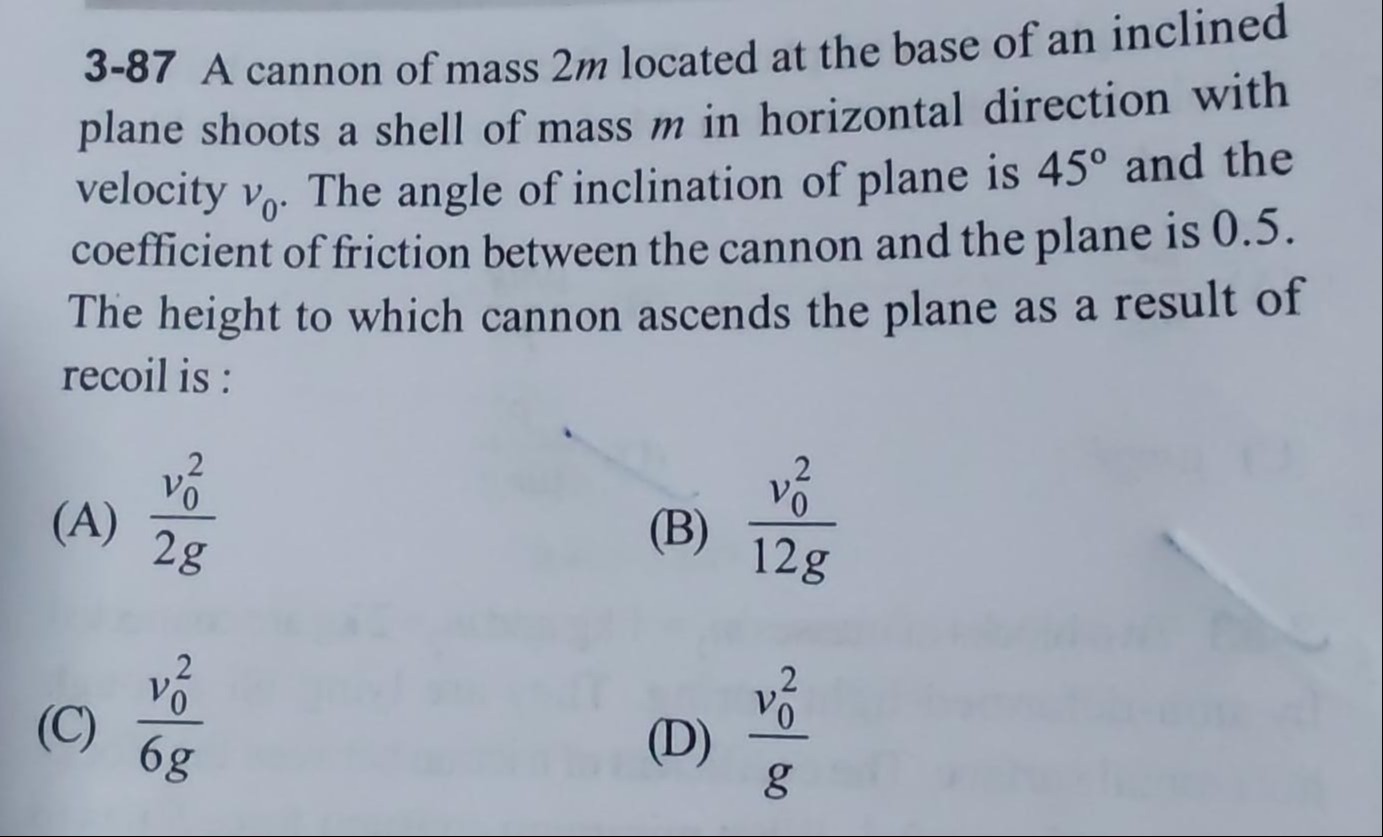Question
Question: A cannon of mass 2*m* located at the base of an inclined plane shoots a shell of mass *m* in horizon...
A cannon of mass 2m located at the base of an inclined plane shoots a shell of mass m in horizontal direction with velocity v₀. The angle of inclination of plane is 45° and the coefficient of friction between the cannon and the plane is 0.5. The height to which cannon ascends the plane as a result of recoil is:

2gv02
12gv02
6gv02
gv02
12gv02
Solution
-
Conservation of Momentum: The cannon and shell system is initially at rest. When the shell of mass m is fired horizontally with velocity v0, the cannon of mass 2m recoils. By conservation of linear momentum in the horizontal direction, the recoil velocity of the cannon, vc, is found to be mv0=(2m)vc, which gives vc=2v0. This recoil velocity is directed up the inclined plane.
-
Forces on the Cannon: As the cannon moves up the inclined plane, it experiences the following forces opposing its motion:
- Component of gravity along the plane: Fg=(2m)gsinθ (downwards)
- Friction force: f=μN, where N is the normal force. The normal force is N=(2m)gcosθ. Thus, f=μ(2m)gcosθ (downwards, opposing motion).
-
Deceleration: The net force acting down the inclined plane is Fnet=Fg+f=(2m)gsinθ+μ(2m)gcosθ. The deceleration a of the cannon is given by Fnet=(2m)a. So, (2m)a=(2m)g(sinθ+μcosθ). a=g(sinθ+μcosθ). Given θ=45∘ and μ=0.5: a=g(sin45∘+0.5cos45∘)=g(21+0.5×21)=g(21.5)=g223.
-
Kinematics: The cannon starts with an initial velocity u=vc=2v0 up the incline and comes to rest (v=0). Using the kinematic equation v2=u2+2as, where s is the distance traveled up the plane: 02=(2v0)2+2(−g223)s 0=4v02−g23s s=4v02×3g2=12g2v02.
-
Height Ascended: The height h to which the cannon ascends is related to the distance s along the plane by h=ssinθ. h=(12g2v02)sin45∘=(12g2v02)(21)=12gv02.
